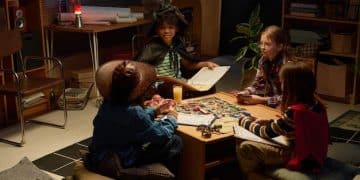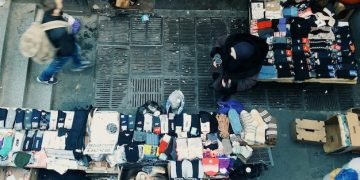DIY Biohacking in the US: Redefining Culture and Ethics
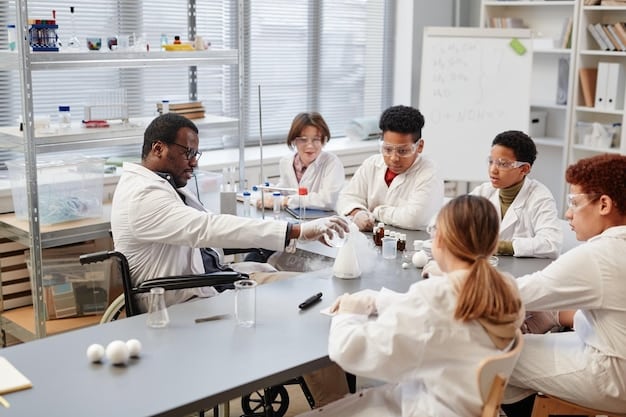
DIY biohacking is a growing subculture in the US where individuals and communities experiment with biology outside traditional scientific institutions, raising ethical questions and offering unique insights into health and self-enhancement.
In the United States, a fascinating phenomenon is taking hold: the rise of DIY biohacking. This movement sees individuals and small groups engaging in biological experiments outside the confines of established laboratories and institutions, pushing ethical boundaries and challenging conventional approaches to health and well-being.
Understanding DIY Biohacking: A New Frontier
DIY biohacking, also known as citizen science or garage biology, is a movement where individuals, typically without formal scientific training, conduct biological experiments. This ranges from genetic testing and microbiome analysis to creating new organisms and experimenting with human enhancement.
This trend isn’t just about scientific curiosity; it’s a cultural shift that challenges the traditional gatekeepers of scientific knowledge and empowers individuals to take control of their health and well-being. The US, with its strong culture of individualism and technological innovation, has become a hotbed for this activity.
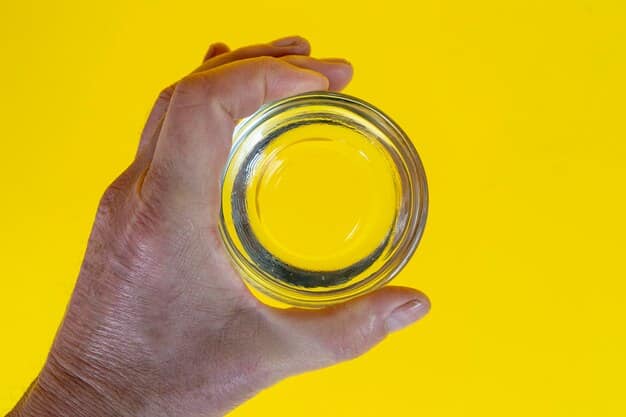
The Roots of DIY Biohacking
To understand the rise of DIY biohacking, it’s important to look at its historical roots and the factors that have contributed to its growth.
- Open Source Movement: The principles of open-source software and information sharing have significantly influenced the DIY biohacking community.
- Decreasing Costs of Technology: Advances in technology have made scientific equipment more affordable and accessible to the general public.
- Dissatisfaction with Traditional Healthcare: Some individuals turn to DIY biohacking due to frustrations with the limitations or cost of conventional medical treatments.
- Increased Scientific Literacy: Growing public interest in science and technology has fueled curiosity and experimentation.
In essence, DIY biohacking is a confluence of factors that reflect a desire for greater autonomy and control over one’s health and scientific understanding.
DIY biohacking represents a significant shift in how science is conducted and understood. By making scientific tools and resources more accessible, it democratizes knowledge and empowers individuals to engage in experimentation and discovery outside traditional institutional settings.
Ethical Concerns and Regulatory Challenges
One of the most pressing issues surrounding DIY biohacking is the ethical implications of individuals conducting potentially risky experiments without proper oversight. This raises questions about safety, responsibility, and the potential for unintended consequences.
The lack of regulatory frameworks for DIY biohacking presents a significant challenge. While established research institutions are subject to strict guidelines, DIY biohackers operate in a gray area, making it difficult to ensure that experiments are conducted safely and ethically.
Potential Risks and Benefits
It’s important to weigh the potential risks against the possible benefits of DIY biohacking.
- Risk of Harm: Unsupervised experiments can lead to unintended harm to the experimenter, the environment, or the wider community.
- Responsible Innovation: DIY biohacking can foster innovation by allowing individuals to pursue research questions that may not be prioritized by traditional institutions.
- Lack of Expertise: The absence of formal training can lead to errors in experimental design and interpretation.
- Community Engagement: DIY biohacking can promote public engagement with science and technology, fostering a more informed and scientifically literate society.
Navigating the ethical and regulatory landscape requires a balanced approach that fosters innovation while mitigating potential risks.
The ethical considerations surrounding DIY biohacking are complex and multifaceted. The potential benefits of citizen science must be carefully weighed against the risks, and appropriate safeguards must be put in place to protect individuals and the environment.
Communities and Spaces: The Hubs of DIY Biohacking
DIY biohacking thrives in community-based spaces, ranging from shared labs to online forums. These hubs provide support, resources, and a sense of belonging for individuals engaged in DIY biology.
These communities play a crucial role in shaping the culture of DIY biohacking and fostering a sense of responsibility and shared learning among its members. They also serve as platforms for discussing ethical considerations and best practices.
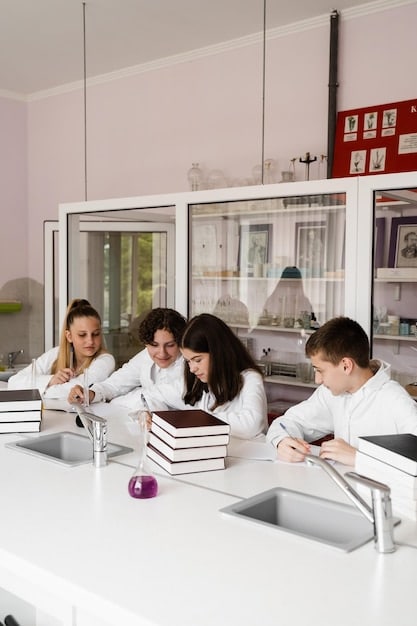
Examples of DIY Biohacking Spaces
Here are a few examples of community biohacking spaces in the US:
- Biocurious (California): One of the oldest and largest community biolabs, offering classes, workshops, and lab space.
- Genspace (New York): A non-profit community lab dedicated to promoting citizen science and bioengineering.
- The Hackteria Network: A global network of open-source biological art and biohacking projects, with a strong presence in the US.
These spaces provide a valuable resource for DIY biohackers, enabling them to learn, experiment, and collaborate in a safe and supportive environment.
DIY biohacking communities and spaces are essential for fostering innovation, promoting ethical conduct, and providing a platform for learning and collaboration. By creating supportive environments, these communities empower individuals to explore the possibilities of DIY biology responsibly.
Practical Applications: What DIY Biohackers Do
DIY biohacking covers a wide range of activities, from simple experiments to more ambitious projects. These applications often aim to improve personal health, enhance understanding of biology, or develop innovative solutions to real-world problems.
One common area of interest is personalized medicine, where individuals analyze their own genetic data or microbiome to tailor their diet and lifestyle for optimal health. Other projects focus on environmental monitoring and creating sustainable solutions, such as biofuels and bioremediation.
Examples of DIY Biohacking Projects
Here are a few examples of practical applications in DIY biohacking:
- Genetic Testing: Analyzing personal DNA to understand ancestry, health risks, and traits.
- Microbiome Analysis: Studying the composition of bacteria in the gut to optimize digestion and overall health.
- Synthetic Biology: Creating new biological parts or organisms for various applications, such as producing biofuels or cleaning up pollutants.
These projects demonstrate the diverse range of interests and capabilities within the DIY biohacking community.
DIY biohacking holds tremendous potential for practical applications, from advancing personal health to addressing environmental challenges. By empowering individuals to engage in scientific exploration, it opens new avenues for innovation and discovery.
The Influence of Technology and the Internet
The internet and advances in technology have played a crucial role in the growth of DIY biohacking. Online resources, open-source software, and affordable lab equipment have made DIY biology more accessible than ever before.
The internet provides a platform for sharing knowledge, collaborating on projects, and discussing ethical considerations. Online forums and social media groups connect DIY biohackers from around the world, fostering a sense of community and shared learning.
Key Technologies and Online Resources
Here are some key technologies and online resources that support DIY biohacking:
- CRISPR gene editing: Allows precise modification of DNA sequences.
- Open-source software: Provides tools for analyzing genetic data and designing experiments.
- Online databases: Offer access to scientific literature and DNA sequences.
These technologies and resources empower DIY biohackers to conduct increasingly sophisticated experiments from their homes or community labs.
The convergence of the internet and technological advancements has revolutionized DIY biohacking, making it more accessible, collaborative, and impactful. By harnessing the power of these tools, DIY biohackers are able to explore the frontiers of biology and push the boundaries of scientific knowledge.
Future Trends and the Evolution of DIY Biohacking
DIY biohacking is likely to continue evolving as technology advances and public interest in science and health grows. Future trends may include greater collaboration with established research institutions, increased focus on ethical considerations, and the development of more sophisticated tools and techniques.
One possible future scenario is the integration of DIY biohacking into mainstream education and healthcare. Imagine high school students learning about genetics through hands-on experiments or individuals using personal genetic data to make informed healthcare decisions.
Potential Future Developments
Here are some potential future developments in DIY biohacking:
- Integration with AI: Using artificial intelligence to analyze biological data and design experiments.
- Increased regulation: Development of clearer guidelines and regulations for DIY biohacking activities.
- Greater public awareness: Increased media coverage and public discourse about the ethical and social implications of DIY biology.
The future of DIY biohacking will depend on how we navigate the ethical challenges and harness the power of this movement for the benefit of society.
As DIY biohacking continues to evolve, it promises to reshape the landscape of science, health, and culture. By embracing innovation, fostering ethical conduct, and promoting public engagement, we can unlock the full potential of this movement and create a more informed and empowered society.
| Key Point | Brief Description |
|---|---|
| 🧪 DIY Biohacking | Citizen science involving biological experiments outside traditional institutions. |
| 🔬 Ethical Concerns | Experiments without proper oversight raising ethical and safety issues. |
| 🌍 Communities | Spaces fostering support, resources, and collaboration for DIY biohackers. |
| 🧬 Practical Applications | Projects improving health, environmental solutions, and scientific understanding. |
FAQ
▼
DIY biohacking involves biological experiments conducted by individuals outside traditional scientific institutions. It’s a growing movement fueled by curiosity and access to technology.
▼
Yes, ethical concerns exist around unsupervised experiments, potential risks, and responsible innovation. These are key issues debated within the community.
▼
DIY biohackers often use community labs, shared spaces, and even home setups for conducting experiments. These spaces provide resources and foster collaboration.
▼
Practical applications include genetic testing, microbiome analysis, and synthetic biology projects. These efforts aim to improve health and solve environmental problems.
▼
Technology plays a crucial role by providing access to online resources, affordable equipment, and open-source software. These advancements democratize scientific exploration.
Conclusion
In conclusion, DIY biohacking represents a fascinating intersection of science, culture, and ethics in the US. As this movement continues to evolve, addressing the ethical considerations and fostering responsible innovation will be crucial for maximizing its potential benefits while mitigating potential risks.
